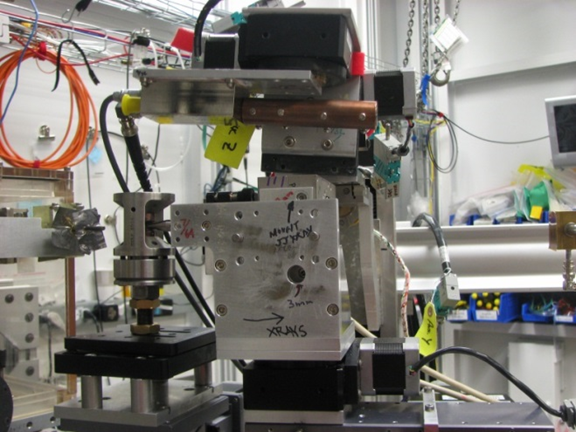ID-D X-Ray Raman and Inelastic X-Ray Scattering
In the limit of low scattering angles and low-Z elements, X-ray Raman Scattering (XRS) yields similar information about the electronic structure of a sample as the X-ray absorption spectroscopy technique. But, one advantage of XRS is that it is an energy-loss technique and can be done with high energy photons which are suitable for high pressure measurements. At 16-IDD, we use an incident energy of about 10 keV. In an XRS experiment, the focused incident beam impinges on the sample. The scattered x-ray photons are collected by a spherically-bent single-crystal analyzer one meter downstream and re-focused at a solid-state detector in a nearly backscattering geometry. The incident x-ray energy is scanned relative to the elastic line to determine the photon energy loss. Using the same experimental setup of XRS, we can conduct an inelastic x-ray scattering measurements to study electronic band structure, electronic excitations, excitons, plasmons and their dispersions under high pressure. During IXS experiments, both incident x-ray energy and scattering angle need to be scanned to obtain the dielectric function and the dynamic structure factor.
Our beamline specializes in measurement of systems at high pressures using diamond anvil cells. To reduce the parasitic scattering from the surrounding gasket, we have made a comparison of x-ray Raman spectra using post-sample collimation slits versus that of a post-sample polycapillary optic. The advantage of the polycapillary is that its field of view is about 50 um, so it does not ‘see’ as much of the gasket scattering. The tradeoff is that the polycapillary has about a 20% transmission efficiency and a wider acceptance angle of collected scattering. The results of our comparison show a significant improvement in the signal/background ratio using the polycapillary. For the same sample and counting times, the background is reduced by about a factor of 5 using the polycapillary. This is essential to be able to measure samples at mega-bar pressures.

